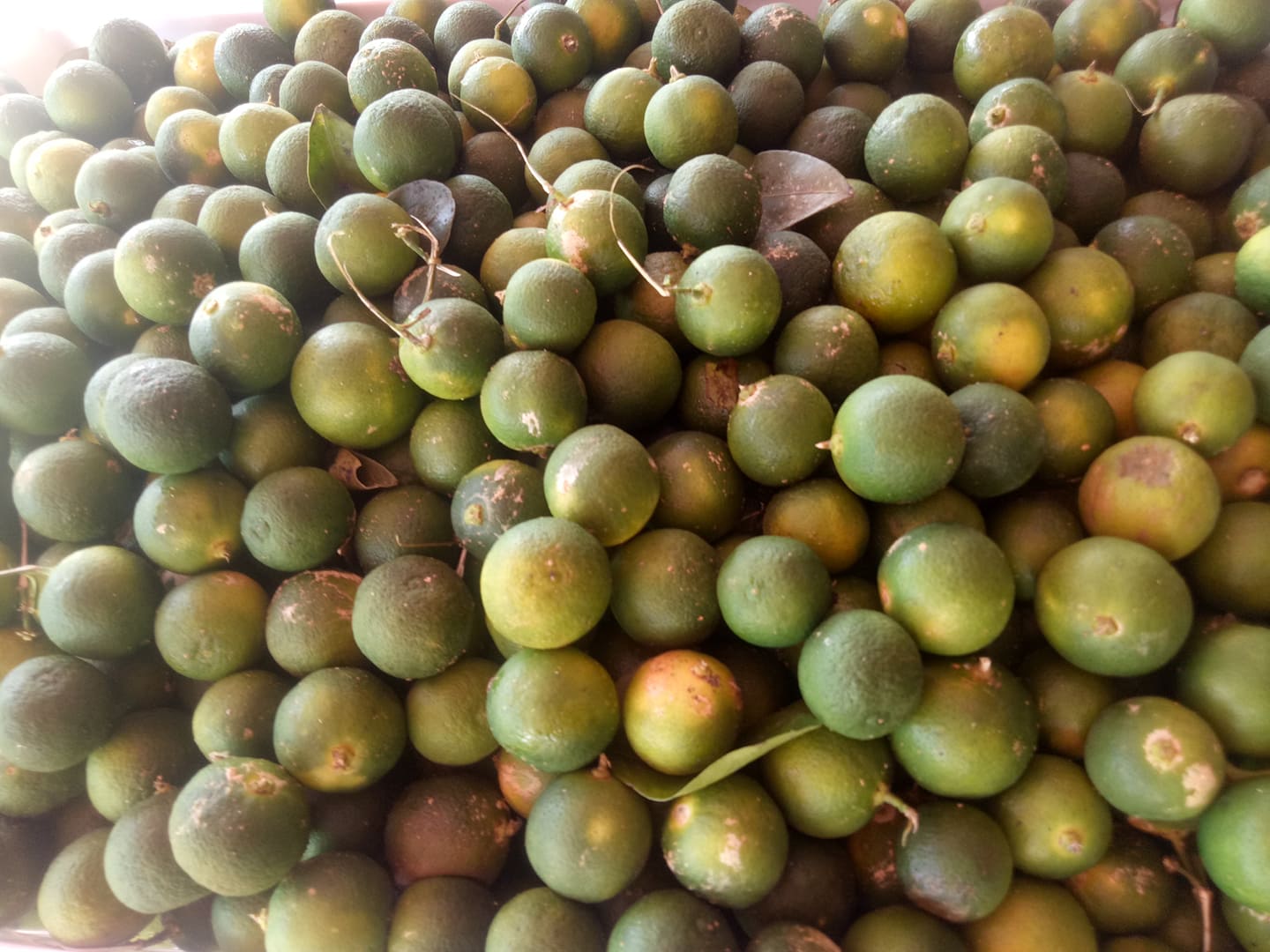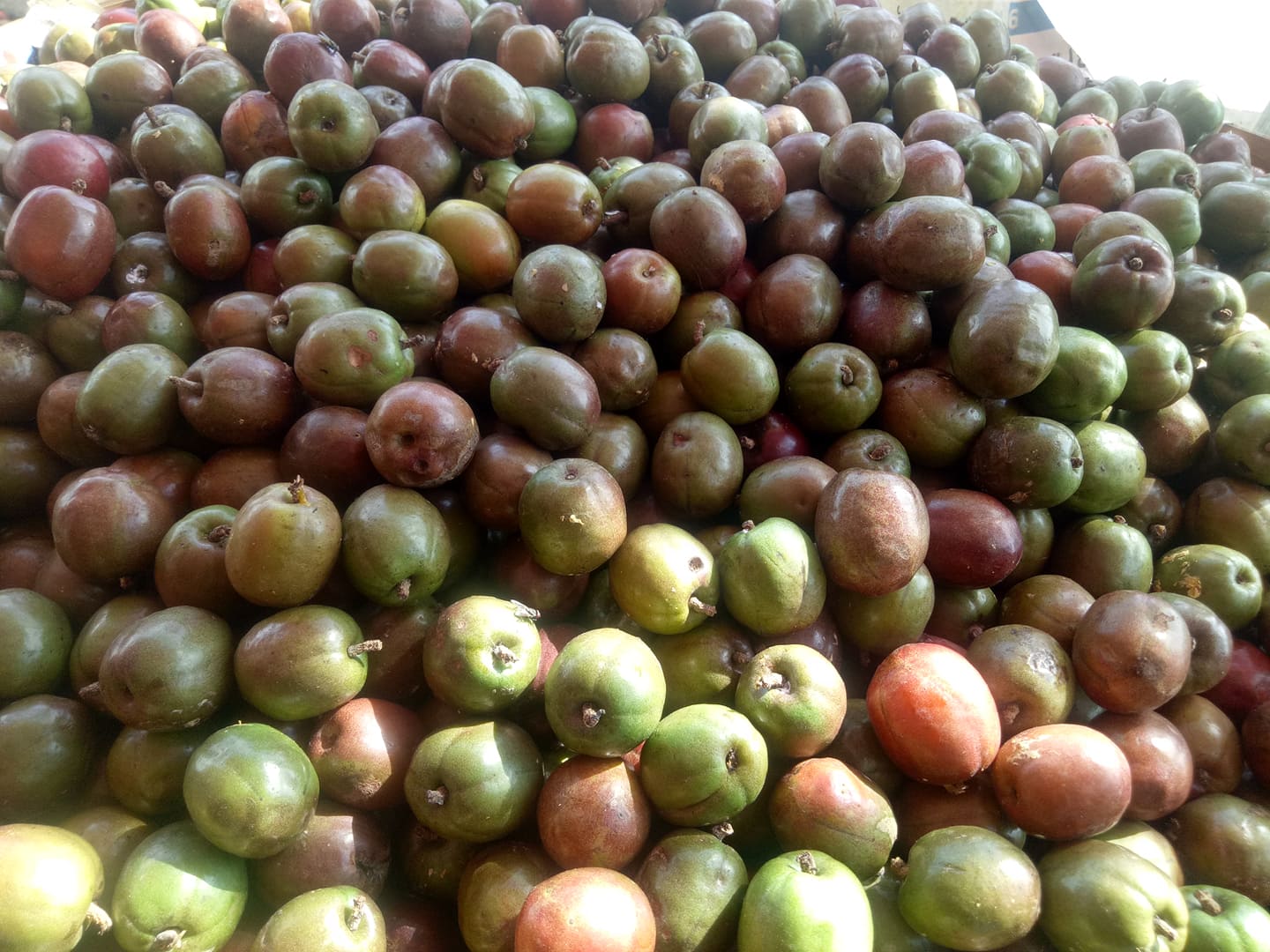Yesterday morning we went to palengke (market) and bought some fruits. I only bought five pieces of apple and five pieces of banana. These costs about one hundred five pesos ($2.00, approximately). I took pictures of all other fruits available in the stall.
APPLE

A raw apple is 86% water and 14% carbohydrates, with negligible content of fat and protein. A 100 grams of an apple, including its skin provides 52 calories and a moderate content of dietary fiber.
AVOCADO

A 100g serving of avocado is moderate to rich in several B vitamins and vitamin K, with good content of vitamin C, vitamin E and potassium. Avocados also contain phytosterols and carotenoids, such as lutein and zeaxanthin.
BANANA

Raw bananas (not including the peel) are 75% water, 23% carbohydrates, 1% protein, and contain negligible fat. A 100-gram reference serving supplies 89 Calories, 31% of the US recommended Daily Value (DV) of vitamin B6, and moderate amounts of vitamin C, manganese and dietary fiber, with no other micronutrients in significant content.
It is believed that it contains exceptional potassium content, but their actual potassium content is not high per typical food serving, having only 8% of the US recommended Daily Value for potassium and considered as a low level of the daily value. Their potassium-content ranking among fruits, vegetables, legumes, and many other foods is relatively moderate.
CALAMANSI

Citric fruits, like calamansi, are known to be rich in Vitamin C, this nutrient prevents decay and loosening of the teeth, dental caries, toothache, bleeding of the gums and fragility of bones. The pectin content found in the pulp of the fruit is known to work wonders in lowering blood cholesterol.
GRAPES

Grapes are rich in polyphenolic phytochemical compound resveratrol. Resveratrol is one of the powerful anti-oxidant which has been found to play a protective role against cancers of colon and prostate, coronary heart disease (CHD), degenerative nerve disease, Alzheimer's disease and viral/ fungal infections.
MANGO

The energy value per 100 g (3.5 oz) serving of the common mango is 250 kJ (60 kcal), and that of the apple mango is slightly higher (330 kJ (79 kcal) per 100 g). Fresh mango contains a variety of nutrients, but only vitamin C and folate are in significant amounts of the Daily Value as 44% and 11%, respectively.
ORANGE

As with other citrus fruits, orange pulp is an excellent source of vitamin C, providing 64% of the Daily Value in a 100 g serving. Numerous other essential nutrients are present in low amounts.
Oranges contain diverse phytochemicals, including carotenoids such as beta-carotene, lutein and beta-cryptoxanthin, flavonoids and numerous volatile organic compounds producing orange aroma, including aldehydes, esters, terpenes, alcohols, and ketones.
PEAR

Raw pear is 84% water, 15% carbohydrates and contains negligible protein and fat. In a 100 g reference amount, raw pear supplies 57 calories, a moderate source of dietary fiber, and no other essential nutrients in significant amounts.
PINEAPPLE

Raw pineapple pulp is 86% water, 13% carbohydrates, 0.5% protein, and contains negligible fat. In a 100-gram reference amount, raw pineapple supplies 50 calories, and is a rich source of manganese (44% Daily Value, DV) and vitamin C (58% DV), but otherwise contains no micronutrients in significant amounts.
PONKAN

Like most other citrus fruits, ponkan fruits are low in glycemic-index, which means that it does not quickly trigger the production of sugar. It is also rich in vitamin C, which according to some experts are helpful in controlling blood sugar levels.
SINEGUELAS

Also known as red mombin, Spanish plum, purple plum, java plum, red plum, purple mombin or wild plum, sineguelas a tropical fruit that grows in shrub requiring little cultivation that is seasonally common during summer. It is high in calcium, phosphorus, ascorbic acid and amino acids like lysine, methionine, threonine and tryptophan. The fruit is rich in in vitamin C for boosting immune system and serves as an antioxidant.
WATERMELON

Watermelon fruit is 91% water, contains 6% sugars, and is low in fat. In a 100-gram serving, watermelon fruit supplies 125 kilojoules (30 kilocalories) of food energy and low amounts of essential nutrients. Only vitamin C is present in appreciable content at 10% of the Daily Value (table). Watermelon pulp contains carotenoids, including lycopene.
Note: Some of these fruits are imported but most of it are grown in the Philippines.
Thanks and best regards,
@braddvon21
You can follow me also at my other social media accounts:
Youtube Channel: Bradd Von Learns
Facebook Page: Bradd Von Learns
Instagram: Bradd Von Learns
Or email me at [email protected] for inquiries.

Congratulations @braddvon21! You have completed the following achievement on the Hive blockchain and have been rewarded with new badge(s) :
You can view your badges on your board And compare to others on the Ranking
If you no longer want to receive notifications, reply to this comment with the word
STOPTo support your work, I also upvoted your post!
Do not miss the last post from @hivebuzz:
Support the HiveBuzz project. Vote for our proposal!
I Love Fruits Thank you for nutritional value and vitamin information that we can get in the featured fruits
Have not had sineguelas for the longest time already. Maybe I will look for it when I go to the market tomorrow. :)